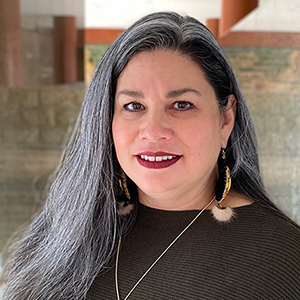When the Center for Indian Country Development (CICD) has reached out for input about Community Reinvestment Act (CRA) modernization, tribal leaders have made clear that access to credit in their communities is a major concern. Opening the discussion section of CICD’s virtual January 21, 2021, national tribal listening session on the CRA, Zach Ducheneaux, member of the Cheyenne River Sioux Tribe and executive director of the Intertribal Agriculture Council, raised significant concerns about the lack of loans and financial services in Indian Country, a situation that is contrary to the purposes of CRA to address redlining. Ducheneaux was one of several voices from Indian Country that CICD has engaged over the last few months to ensure that the modernization process includes Native perspectives.
Modernizing the CRA
The CRA is a seminal piece of federal legislation designed to address redlining and other systemic inequities in access to credit. Redlining is the practice of refusing to make loans or extend other financial services in communities made up largely of minority individuals, even when the individuals present the same credit risk as people residing outside of those communities. The CRA requires the Federal Reserve System and other federal banking regulators to encourage banks and other deposit-taking financial institutions to help meet the credit needs of the communities in which they do business. Under the CRA, the regulators periodically evaluate and rate banks’ performance in conducting lending and other activities in the low- and moderate-income communities within the banks’ assessment areas, or geographically delineated service areas. The Federal Reserve is now in a 120-day public comment period on its Advance Notice of Proposed Rulemaking (ANPR) on CRA modernization, the first major update to the Fed’s CRA regulations in a generation.
The ANPR explicitly addresses capital and credit challenges in Indian Country. Three areas in particular stand out for tribal communities: the matter of qualifying geographies, which considers whether CRA eligibility should be expanded to all of Indian Country, regardless of a given bank’s assessment area; qualifying activities, which considers what bank activities are eligible for CRA credit; and impact scores, where the Fed is seeking to understand how to appropriately and proportionately give CRA consideration to the most impactful CRA activities.
Recurring themes
A few themes emerged in the national listening session. First, federal credit programs for Indian Country, such as the U.S. Department of Housing and Urban Development’s Section 184 Indian Home Loan Guarantee program, tend to be used most frequently by a relatively small number of institutions that deliver those products to large geographies beyond their assessment areas. Second, increasing the volume of loans may be insufficient for the long-term development of Indian Country if those loans have higher interest rates than those offered to other populations. Last, lender success in Indian Country depends on education and relationships. Tribes need straightforward access to regulatory data on CRA activity in their areas, and lenders need to develop the capacity to work within the unique legal and regulatory frameworks of tribal nations.
CICD has worked to make sure that a variety of Indian Country perspectives will be incorporated into ANPR feedback. Federal Reserve Governor Lael Brainard held a discussion at the National Congress of American Indians’ 77th Annual Convention and Marketplace, where she engaged with several tribal experts and leaders. In December, a CICD session at the National American Indian Housing Council’s Legal Symposium created an opportunity to focus on lending—and also on housing, which is a serious issue in tribal communities that has been exacerbated by the COVID-19 pandemic.
CICD worked with the Native CDFI Network (NCN) and First Nations Oweesta to host a separate listening session focused on the needs of NCN’s member organizations, which are often some of the only community sources of credit in Indian Country.* NCN Executive Director Jackson Brossy pointed out in that session that while there were many billions of dollars in activity that received CRA credit in recent years, only 24 percent of NCN member institutions reported partnerships that resulted in CRA credit for a bank, adding that “we need to put some teeth into this modernization.”
CICD is grateful for all the feedback on the CRA ANPR that experts and practitioners in Indian Country have provided so far, and encourages more feedback before the close of the public comment period on February 16, 2021. That will not be the final opportunity for public comment, however; the ANPR is the first step in a rulemaking process, and as the Fed moves to the next stage, it will continue to solicit input from tribal communities to ensure that the CRA appropriately serves their needs.
To submit or view public comments about the CRA ANPR, see the “Regulation BB: Community Reinvestment Act” subsection of the Board of Governors of the Federal Reserve System’s Proposals for Comment web page.
Endnote
* CDFIs, or community development financial institutions, are specialized entities that provide financial products and services, such as small business loans and technical assistance, in markets not fully served by traditional financial institutions. For more information, visit our CDFI Resources page.
Heather Sobrepena is the engagement director for the Minneapolis Fed's Center for Indian Country Development (CICD), where she serves as a key point of contact for tribal governments and Native organizations and individuals seeking to partner with CICD to advance their research and data needs and inform economic policy decisions. She is based at our Helena, Mont., Branch.






